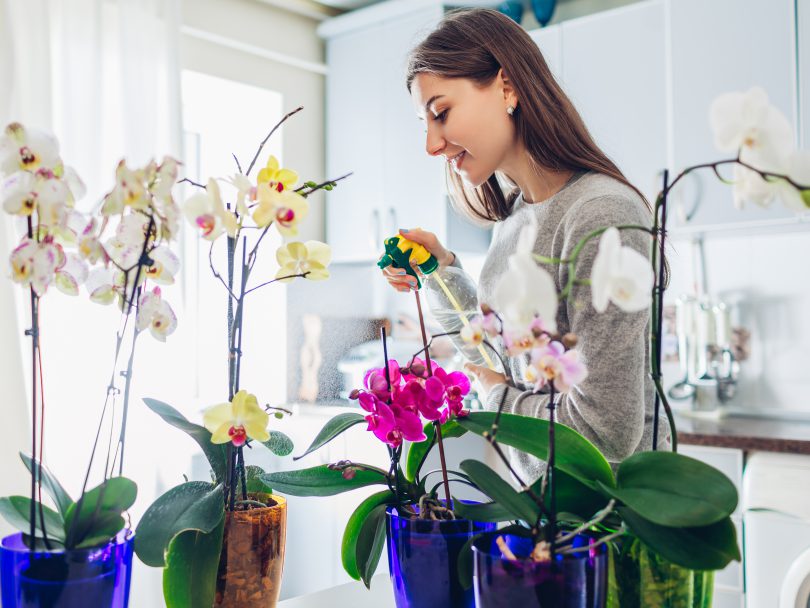By Vicki Spencer
People think orchids are difficult to grow simply because they are such an exotic looking plant. Coloradans are even more skeptical about growing orchids in our semiarid climate. However, orchids, which are extremely diverse with more than 30,000 different species and 200,000 hybrids, don’t just grow in rain forests —they can be found anywhere from the tropics to high-altitude tundra. With a little effort you can find a variety that will adapt to the conditions in your home.
Orchids that originate in the southern hemisphere typically bloom in the winter, which is why you see so many in stores this time of the year. The moth orchid (Phalaenopsis) is one of the most common varieties for sale because it is easy to grow in Colorado. It comes in a wide range of colors, patterns and sizes. Others that aren’t too difficult to grow include Dactylorhiza, Epipactis, Platanthera and Calanthe.
If you admire orchids in the store, you may notice they are not planted in soil. They come in small pots with a special mixture of bark, lava and other materials that don’t absorb water readily. Most orchids are epiphytes that get their nutrients from windblown leaves, bird droppings and grains of soil that become lodged between their tangled roots. So the small pot allows the thick, silvery roots to stick into the air where the orchid expects to gather moisture and nutrients. However, your home is not a rain forest, so you need to provide the missing nutrients.
Fertilizing provides nutrients for optimal health and long-lasting blossoms. Use a liquid fertilizer (more diluted than what you apply to other plants) during active growth periods — typically midwinter. Take caution not to overfertilize as it can be deadly. Thin leaf varieties, such as Cymbidium and Miltonia, are particularly susceptible to over-fertilization. If you see signs of burnt leaf tips, flush the pot with water and let it drain out. If the burning is severe, you may need to repot the plant.
Since epiphytes obtain moisture from the air, they don’t need to be watered often. Once per week is usually enough. I’ve always thought it odd that some instructions say to place three ice cubes in the pot. Someone must have decided this would prevent overwatering, but I imagine the orchid being shocked by chilly ice cubes. Besides, it’s easier to use a small spouted watering can for all my plants and just pour an amount of water (estimated to be equivalent to 3 teaspoons) on the orchid.
Orchids kept in a location with indirect sunlight, away from drafts and watered consistently, will last a long time. When the blossoms wither and die, don’t assume your orchid is dead. Cut the spike off above the second node and keep water, light and humidity consistent throughout the summer. In the fall, move the plant to a cooler location and apply a light amount of fertilizer regularly. With luck, it won’t be long before a new blooming spike appears.
Gardener Vicki Spencer has an eclectic background in conservation, water, natural resources and more.

